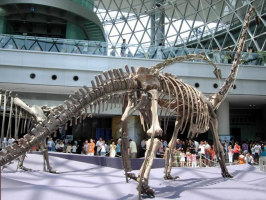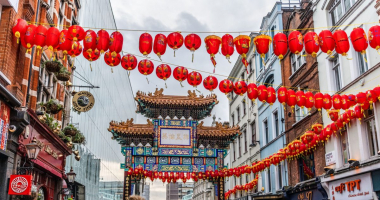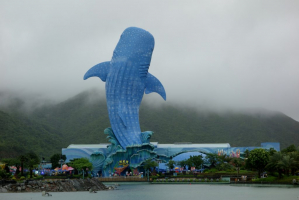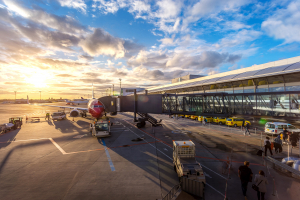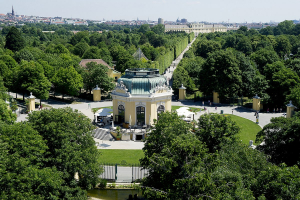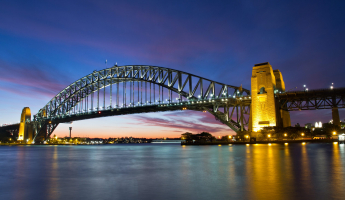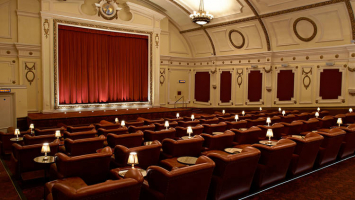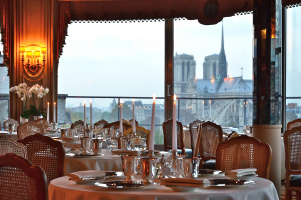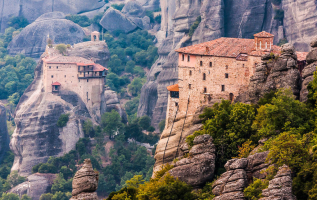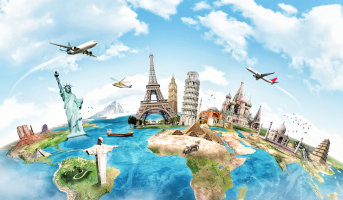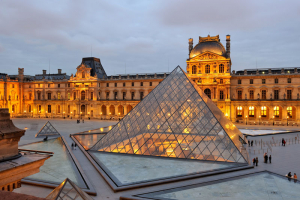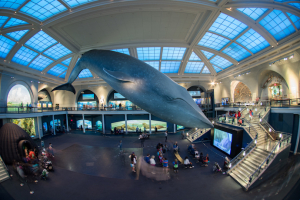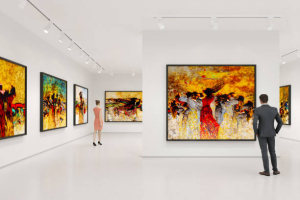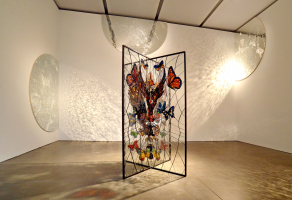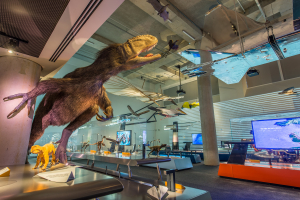Top 12 Best Museums In The World
One of the biggest cultural heritage resources is a museum, which displays tens of thousands of collections, exhibits, and artifacts from all over the world. ... read more...There are over 55,000 museums around the globe that display a variety of objects, works of art, cultural items, paintings, plays, and other things. They not only display these antiquities and artifacts but also preserve them for future generations and house some of the biggest and most significant collections on earth. Here are the best museums in the world.
-
The Smithsonian Institution, sometimes known as The Smithsonian, is the most well-known and well-liked museum in the world, taking the top spot in this list of the top 10 museums in the world in 2020. This museum is a collection of research institutes and museums run by the US government. The museum was established in 1846 and was dubbed the "nation's attic" since it had more than 154 million artifacts. Nine research institutes, 19 museums, 21 libraries, and even a zoo are run by the Smithsonian Institution. The Smithsonian is one of the top 10 most well-known museums in the world with a budget of USD 1.2 billion and over 30 million yearly visitors to all of its locations.
Important research institutions including the Smithsonian Migratory Bird Center, Museum Conservation Institute, Archives of American Art, Smithsonian Libraries, Smithsonian Conservation Biology Institute (National Zoo), and others are part of the Smithsonian. These 168 institutions are referred to as Smithsonian Affiliated museums, and they are located in 39 states, Panama, and Puerto Rico. Long-term loans of artifact collections are granted to these museums. The Smithsonian Institution Touring Exhibition Service manages a sizable proportion of the institution's traveling exhibits (SITES). In 2008, 58 of these traveling exhibitions went to 510 venues across the country.
Detailed information:
- Founded: 1846
- Smithsonian Location: Washington, D.C.; Chantilly, Virginia; New York City
- Smithsonian Annual Budget: USD 1.2 billion
- Smithsonian Annual Visitors: 30 million
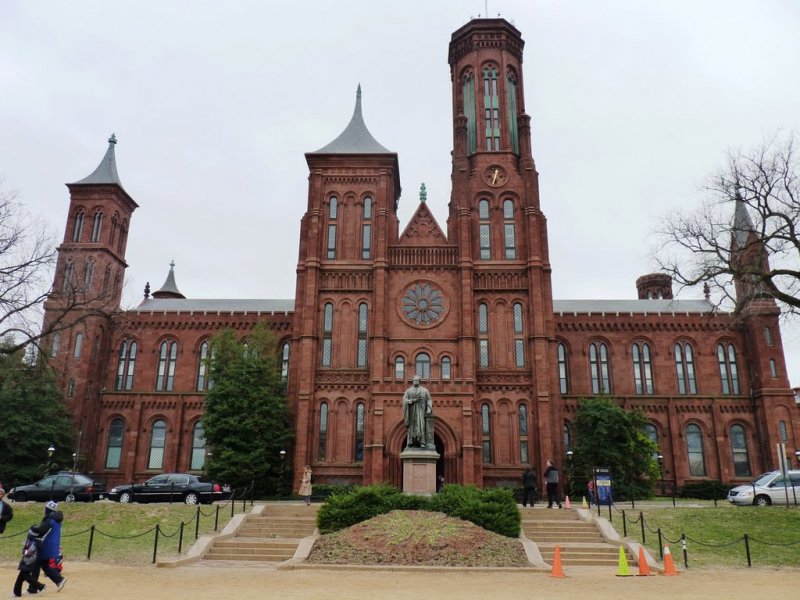
capitolmarkets.com 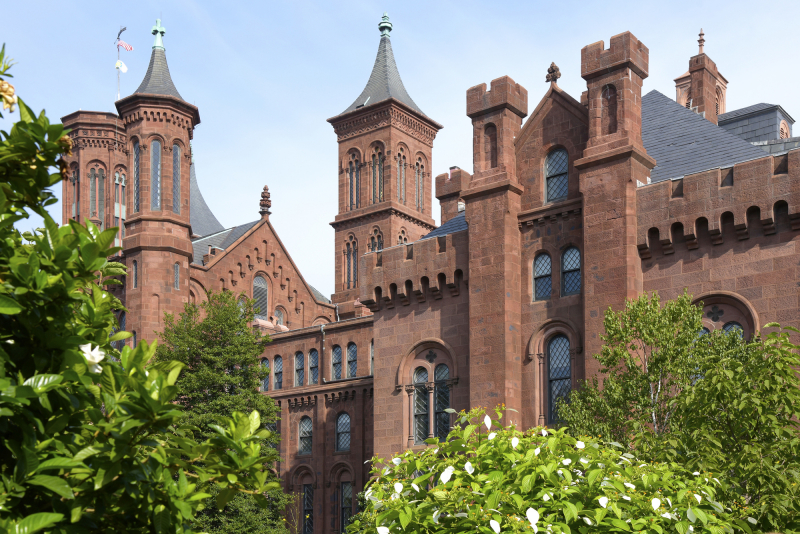
si.edu -
The Louvre, often known as the Louvre Museum, is the most popular museum in the world and a famous landmark in Paris, France. Some of the most well-known works of art, like as the Mona Lisa and the Venus de Milo, are housed there. It is situated on the Right Bank of the Seine in the city's 1st arrondissement and is a major landmark (district or ward). Over a space of 72,735 square meters, almost 38,000 artifacts from prehistory to the 21st century are on display at any given moment. Due to the COVID-19 pandemic, attendance in 2021 was 2.8 million, up 5% from 2020 but still much lower than pre-COVID attendance. In spite of this, the Louvre continued to be the most popular art museum in the world in 2021.
The Louvre Palace, where the museum is located, was initially constructed in the late 12th to early 13th century by Philip II. In the museum's basement, ruins of the medieval Louvre stronghold may be seen. The stronghold soon lost its military use due to urban growth, and Francis I transformed it into the main palace of the French Kings in 1546. The structure was repeatedly expanded to become the current Louvre Palace. Louis XIV decided to move his family to the Palace of Versailles in 1682, leaving the Louvre largely as a museum for the royal collection, which began to include an assortment of ancient Greek and Roman sculpture in 1692. The permanent collection takes up more than 60,600 square meters (652,000 square feet) of the Musée du Louvre, which also houses more than 380,000 other artifacts and 35,000 pieces of art. The Louvre displays sculptures, decorative objects, paintings, sketches, and artifacts from archaeology.
Detailed information:
- Founded: 1793
- Louvre Location: Paris, France
- Louvre Annual Budget: USD 350 million
- Louvre Annual Visitors: 9.6 million
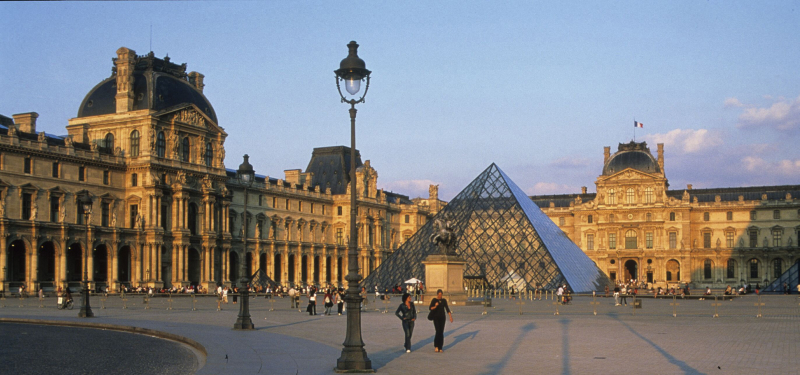
Black Hair 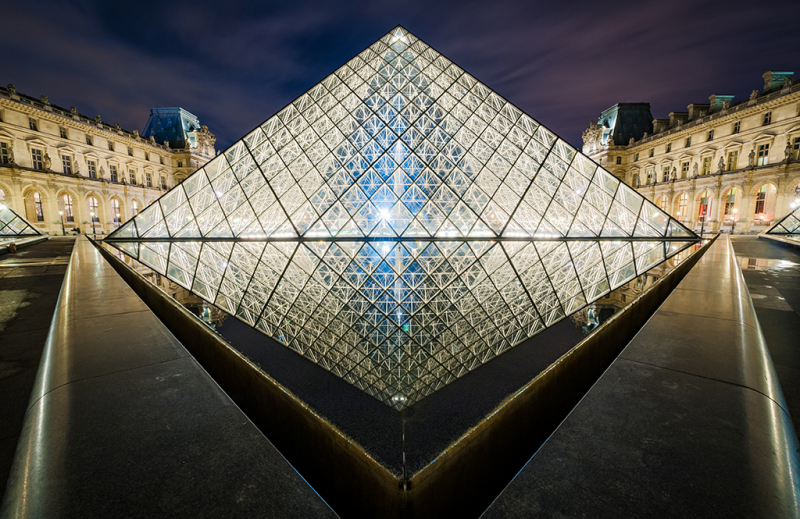
travelcaffeine.com -
An archaeological museum, the Acropolis Museum focuses on the discoveries made at the Acropolis of Athens. The museum was constructed to house every relic, from the Greek Bronze Age through Roman and Byzantine Greece, that was discovered on the rock and on the nearby slopes. It also sits on the ruins of early Byzantine and Roman Athens. The organization of the museum was constituted in 2008, although the museum itself was founded in 2003. The public might enter on June 20, 2009. Over a 14,000 square meter space, more than 4,250 artifacts are on display.
The museum's treasures are displayed on three floors, while the offices, café, and museum store are located on the fourth, center level. The Acropolis slopes' discoveries are shown on the museum's first floor. The floor of the long, rectangular room slopes, simulating the climb up a rock. The ancient artifacts are located in a sizable trapezoidal hall that is located after the hall. The Erechtheum, the Temple of Athena Nike, and the Propylaea, as well as relics from Roman and early Christian Athens, are located on the same floor as other Acropolis structures. In order to maintain the chronological sequence, visitors are expected to witness the latter while descent.
To attain the same cardinal orientation as the ancient temple on the Acropolis, the top level of the Museum is positioned asymmetrically on the lower floors. The Parthenon hall's column spacing is identical to that of the old temple, and the use of glass walls on all four outside walls allows natural light to illuminate the Parthenon marbles in a similar way to how it does on the temple. The metopes are displayed on the columns, two per column, but not as high as in the ancient temple, and the frieze are displayed behind the metopes, forming a continuous band around the walls of a rectangular space set inside the columns, as in the ancient temple but not as high, again for ease of viewing. The pediment marbles are displayed at eye level in front of the end columns.
Detailed information:
- Founded: 2009
- Acropolis Museum Location: Athens, Greece
- Acropolis Museum Annual Budget: USD 175 million
- Acropolis Museum Annual Visitors: 1,666,286 million
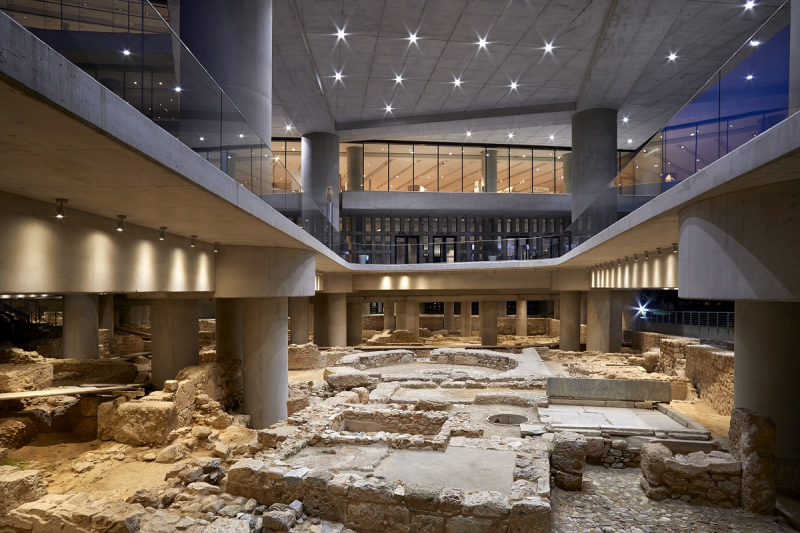
GTP 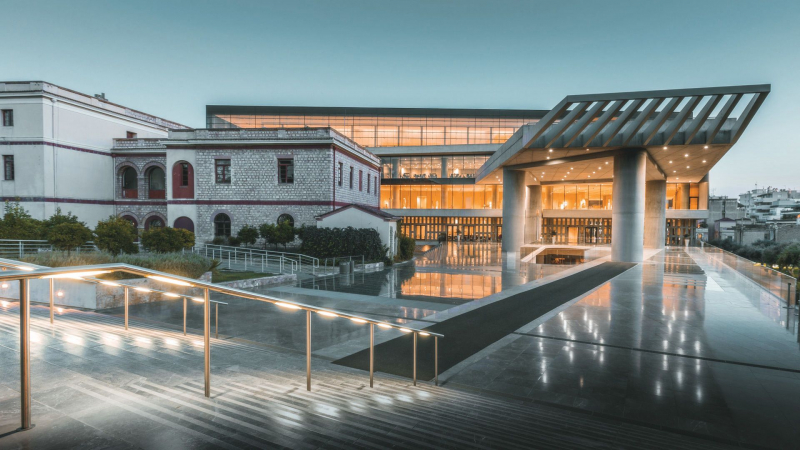
greekescapes.com -
A museum of art and culture may be found in Saint Petersburg, Russia, called the State Hermitage Museum. By gallery space, it is the biggest art museum in the whole globe. When Empress Catherine the Great purchased an extraordinary collection of paintings from Berlin businessman Johann Ernst Gotzkowsky, it was established in 1764. Every year on December 7, Saint Catherine's Day, the museum commemorates the day of its creation. Since 1852, it has been accessible to the public. With 1,649,443 visits in 2021, The Art Newspaper rated the museum sixth on their ranking of the most popular art museums.
Over three million artifacts make up its holdings, of which only a tiny portion are displayed consistently (the numismatic collection accounts for about one-third of them). The collections are housed in a sizable complex made up of six old buildings on Palace Embankment, including the Winter Palace, which served as the Russian monarchs' former home. In addition to these, the museum also includes the Menshikov Palace, the Museum of Porcelain, the Storage Facility at Staraya Derevnya, and the eastern wing of the General Staff Building. The museum has a number of overseas exhibiting venues. The Hermitage is a piece of federally owned land. Director of the museum since July 1992 is Mikhail Piotrovsky.
Five of the six structures that make up the major museum complex—the Hermitage Theatre, Small Hermitage, Old Hermitage, and Winter Palace—are accessible to the general public. Foreign visitors must pay a higher admission price than Russian and Belarussian nationals. On the third Thursday of every month, however, admission is free for everyone, and it is free every day for kids and students. On Mondays, the museum is closed. The Winter Palace's entrance is situated there and is reachable from the Courtyard.
Detailed information:
- Founded: 1764
- State Hermitage Location: Saint Petersburg, Russia
- State Hermitage Annual Visitors: 4,294,000 million
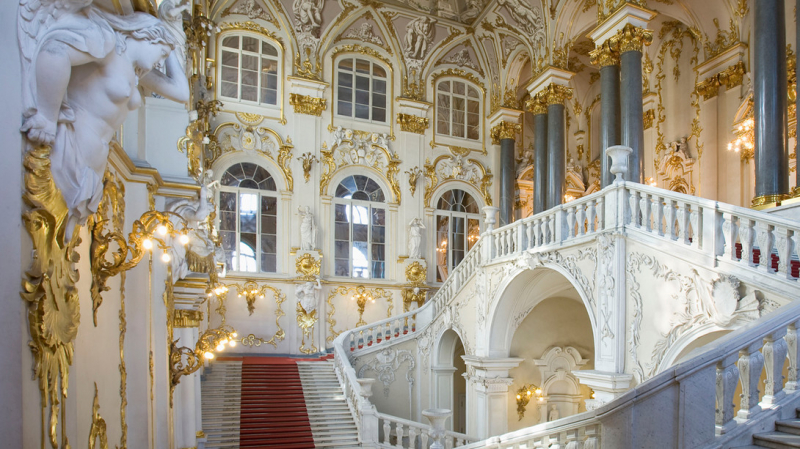
learnrussianlanguage.net 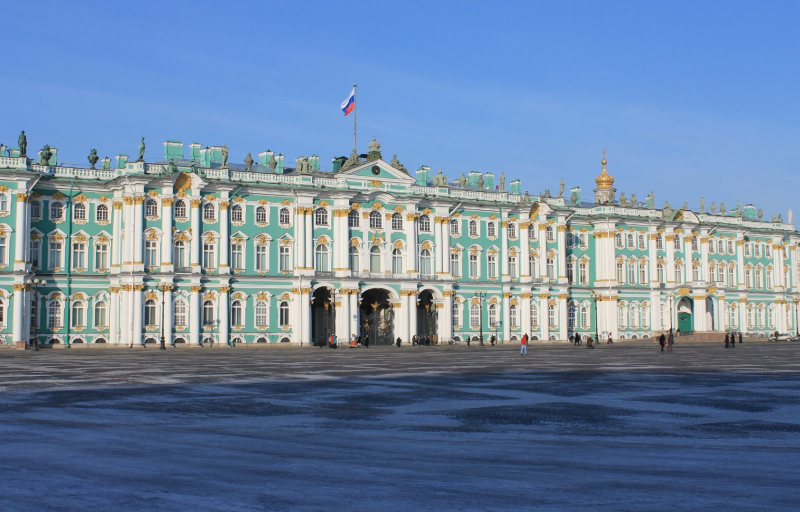
ticketkd.com -
The primary national museum of Spanish art is the Prado Museum, or Museo Nacional del Prado, which is situated in the heart of Madrid. Based on the old Spanish royal collection, it is widely regarded as housing the best collection of Spanish art as well as one of the richest collections of European art in the whole world, extending from the 12th century to the early 20th century. It was established in 1819 as a museum devoted to sculpture and paintings, but it also has significant collections of other kinds of artwork. The Prado Museum, which is regarded as one of the best art museums in the world, is among the most popular destinations on the planet.
The collection's highlights include the several pieces by Francisco Goya, the one artist who is most widely represented, as well as those by Hieronymus Bosch, El Greco, Peter Paul Rubens, Titian, and Diego Velázquez. The majority of the excellent collection of Italian masterworks at the museum, which is today one of the largest outsides of Italy, was brought to Spain thanks to Velázquez and his sharp eye and sensibility. The collection presently includes many additional pieces of art and historical documents along with over 8,200 drawings, 7,600 paintings, 4,800 prints, and 1,000 sculptures. Around 1,300 works were on show in the museum's main buildings as of 2012, while another 3,100 items were on temporary loan to other museums and government organizations. The remaining items were stored.
Detailed information:
- Founded: 1819
- The Prado Location: Madrid, Spain
- The Prado Annual Budget: USD 45.76 million
- The Prado Museum Annual Visitors: 2.89 million
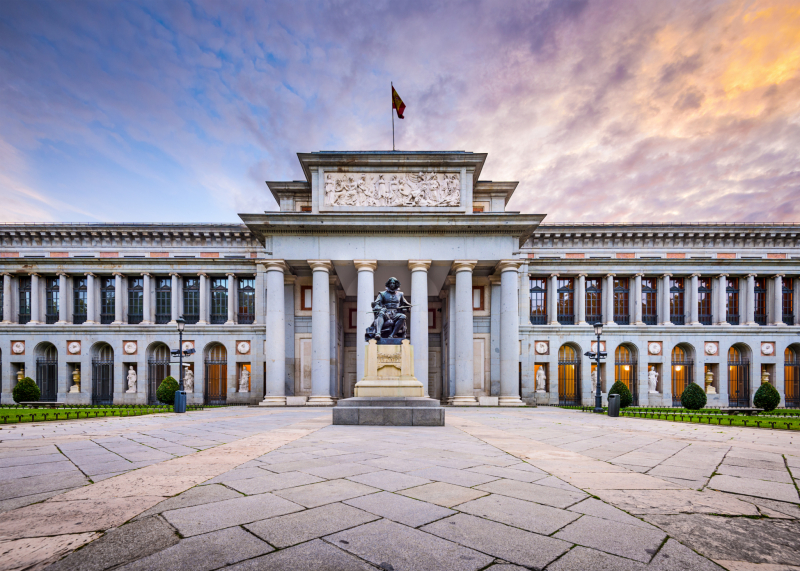
Lonely Planet 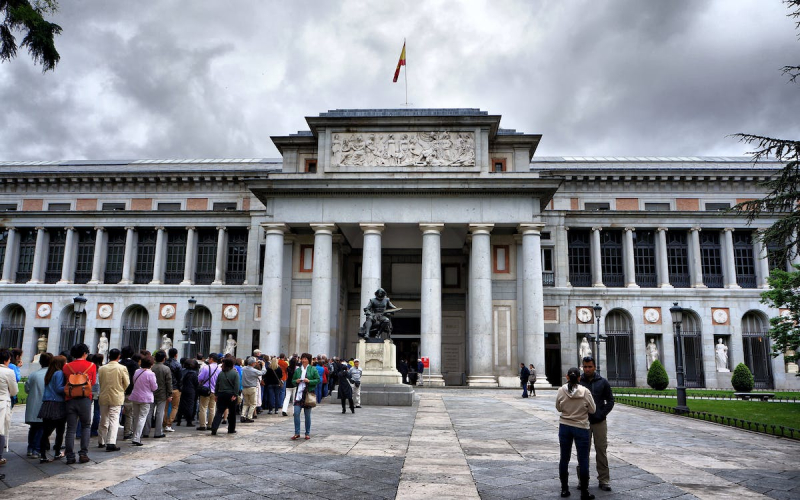
headout.com -
The British Museum is a free, public museum of human history, art, and culture that is situated in London's Bloomsbury neighborhood. Its eight-million-piece permanent collection is one of the biggest and most complete ones ever assembled. The history of human civilization, from its inception to the present, is chronicled. The British Museum was the first national museum that was open to the public and included every branch of study. The Anglo-Irish physician and scientist Sir Hans Sloane's collections served as the foundation for the museum's founding in 1753. On the location of the present structure, in Montagu House, it initially welcomed guests in 1759.
The Natural History Museum was the first of several branch institutions or independent spin-offs created as a consequence of the museum's development during the next 250 years, which was primarily a result of British colonization. The British Library was split from the British Museum by the British Library Act of 1972 in 1973, however the British Library remained housed in the same Reading Room and building as the museum until 1997.
Like other national museums in the UK, the museum is a non-departmental public organization supported by the Department for Digital, Culture, Media, and Sport. It does not charge admission, with the exception of loan exhibitions. With regard to a limited number of its most renowned foreign-origin artifacts, its ownership is in issue and the focus of ongoing international debate over repatriation demands, most notably in the cases of the Greek Elgin Marbles and the Egyptian Rosetta Stone.
Detailed information:
- Founded: 1819
- The British Museum: London, UK
- The British Museum Annual Visitors: 5.82 million
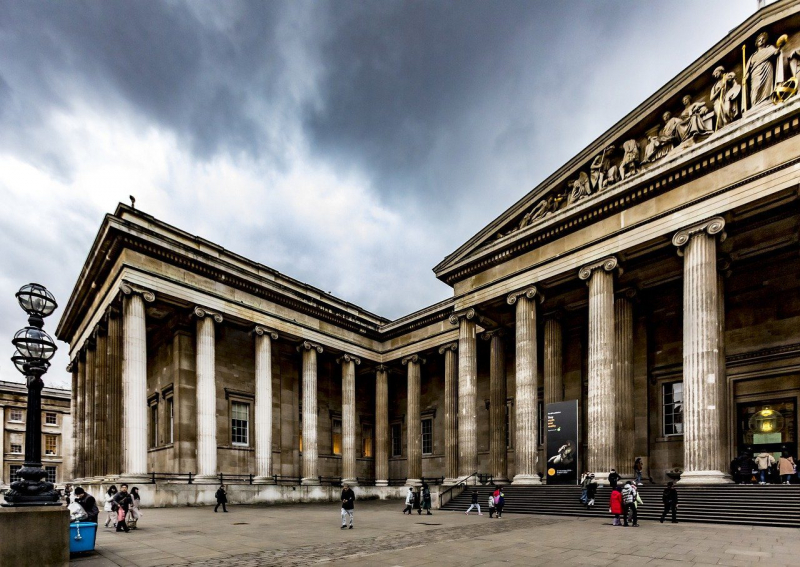
interpark.co.uk 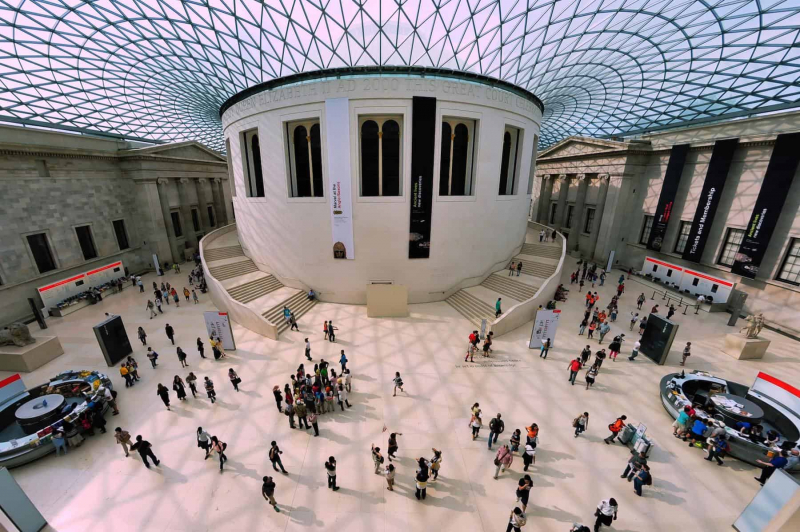
parkbee.com -
The largest art museum in the Americas is New York City's Metropolitan Museum of Art, also known as "the Met". Over two million items from its permanent collection are spread among 17 curatorial divisions. One of the biggest art museums in the world is housed in the main building at 1000 Fifth Avenue, which is located on Manhattan's Upper East Side along the Museum Mile on the eastern border of Central Park. The building's initial phase, which is around 2 million square feet (190,000 m2), was constructed in 1880. The Cloisters at Fort Tryon Park in Upper Manhattan, a considerably more compact second location, houses a substantial collection of artwork, buildings, and relics from medieval Europe.
It was the goal of the Metropolitan Museum of Art when it was established in 1870 to introduce art and art education to the American people. The museum's permanent collection includes artworks from classical antiquity and ancient Egypt, as well as paintings, sculptures, and other works by practically all the great European masters and a sizable selection of contemporary and American works. The Met has a sizable collection of Islamic, Asian, African, and Oceanian artwork. Along with encyclopedic collections of costumes, accessories, and musical instruments, the museum also has ancient armor and weaponry from all around the world. Its galleries contain a number of noteworthy interiors, dating from first-century Rome to contemporary American design. The museum received 1,958,000 visits in 2021, placing it fourth on the list of the most popular art museums worldwide.
Detailed information:
- Founded: 1870
- The Met Location: New York City, USA
- The Met Annual Budget: USD 320 million
- The Met Museum Annual Visitors: 6.95 million
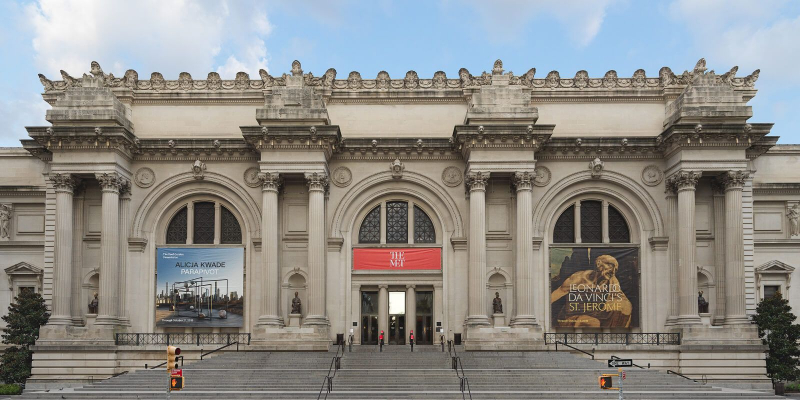
centralparktours.net 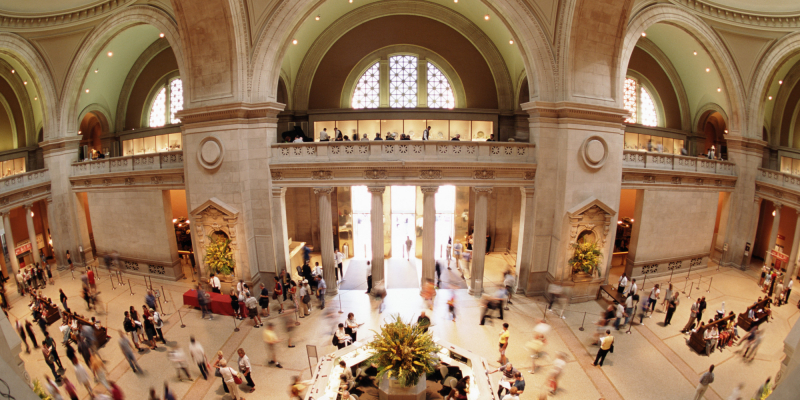
Metropolitan Museum of Art -
The public museums of the Vatican City are known as the Vatican Museums. They exhibit items from the vast collection that the Catholic Church and the pope collected over the years, which includes some of the most famous Roman sculptures and the most significant works of Renaissance art in the whole world. The museums have 640 employees who work in 40 distinct administrative, academic, and restoration departments, and they house some 70,000 pieces, of which 20,000 are on show. Early in the 16th century, Pope Julius II established the museums. On the visiting path through the Vatican Museums are the Sistine Chapel, which has Michelangelo's ceiling and altar wall, and the Stanze di Raffaello.
Due to the COVID-19 epidemic, only 1,300,000 people visited the Vatican Institutions in 2020, an 81 percent decrease from the number of visitors in 2019, but still enough to place the Vatican Museums fourth among the most popular art museums in the world. There are a total of 24 galleries, or rooms, with the Sistine Chapel being, notably, the last chamber seen within the Museum. The Vatican Museums, which were established in 1506, are among the oldest museums in the world and feature notable exhibit pieces from the vast collection that the Papacy and the Roman Catholic Church have gathered.
Detailed information:
- Founded: 1506
- Vatican Museums: Vatican City
- Vatican Museums Annual Visitors: 6.88 million
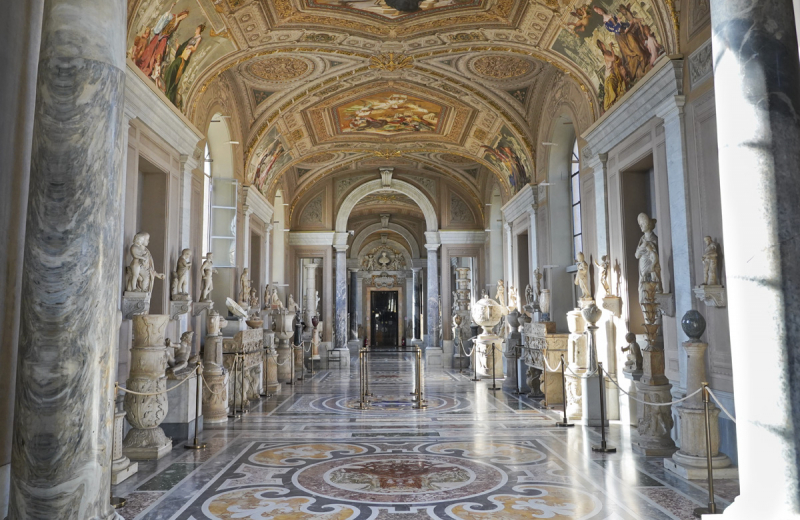
arttrav.com 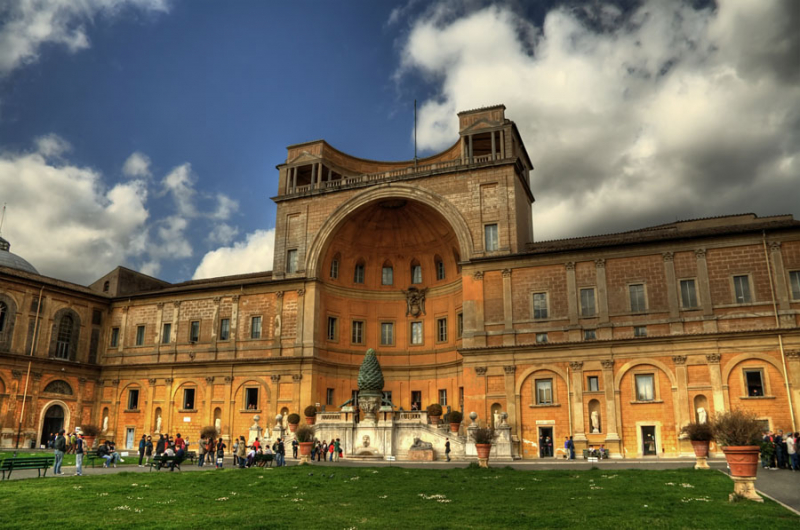
traveldigg.com -
The National Museum of Korea is the cultural institution that symbolizes Korea and is the premier museum of Korean history and art in South Korea. The museum has dedicated itself to several studies and research endeavors in the domains of archaeology, history, and art since its founding in 1945, continually creating a range of exhibitions and educational initiatives. In 2005, it moved to Seoul's Yongsan neighborhood. The National Museum of Korea launched a new location within Incheon International Airport on June 24, 2021. The outpost, which opened to coincide with the museum's 20th anniversary, is situated at the airport's boarding area in front of Gate No. 22.
There are three floors in the museum. Symbolically, the left half of the museum is meant to stand for the past, and the right side, for the future. Parks, gardens of local vegetation, waterfalls, swimming pools, pagodas, stupas, lanterns, and steles may all be found on the bottom floor (including National Treasure of Korea No. 2, the Great Bell of Bosingak, the exemplar of Korean bells of the Joseon period). The Prehistory and Ancient History Gallery, located on the first floor, houses over 4,500 relics from the Paleolithic to the Unified Silla dynasty that were unearthed from places all throughout Korea. The Palaeolithic Room, Neolithic Room, Bronze Age and Gojoseon Room, Proto Three Kingdoms Room, Goguryeo Room, Baekje Room, Gaya Room, and Silla Room are the nine display rooms of the gallery. The artifacts on display here, which range from ancient royal jewelry to magnificent broken stone handaxes, demonstrate the extensive efforts made by early immigrants on the Peninsula to create their own civilization.
The Calligraphy and Painting Gallery, which has 890 works of art, and the Donation Gallery are both located on the second level. Together, they represent the traditional and holy arts of Korea in line and color. The Painting Room, Calligraphy Room, Buddhist Paintings Room, and Sarangbang (Scholar's Studio) are the four rooms that make up the Calligraphy and Painting Gallery. The Sculpture and Crafts Gallery, which has 630 pieces, is located on the third level and showcases Korean Buddhist sculpture and craftwork. Goryeo Celadon goods and National Treasure of Korea No. 83, Bangasayusang, are two of the gallery's standout exhibits (or Pensive Bodhisattva). The Metal Arts Room, the Celadon Room, the Buncheong Ware Room, the White Porcelain Room, and the Buddhist Sculpture Room are the five rooms of the gallery.
Detailed information:
- Founded: 1909
- National Museum of Korea Location: Seoul, South Korea
- National Museum of Korea Museum Annual Visitors: 3.3 million
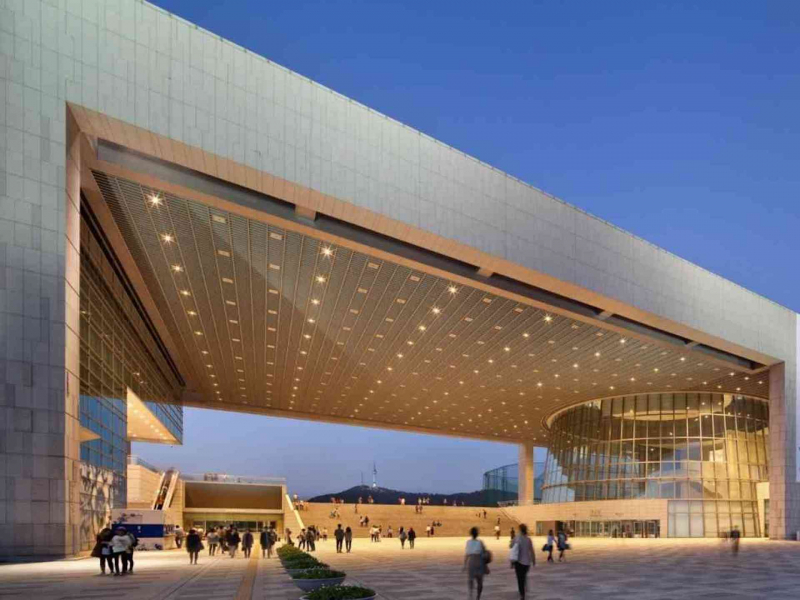
wherevart.com 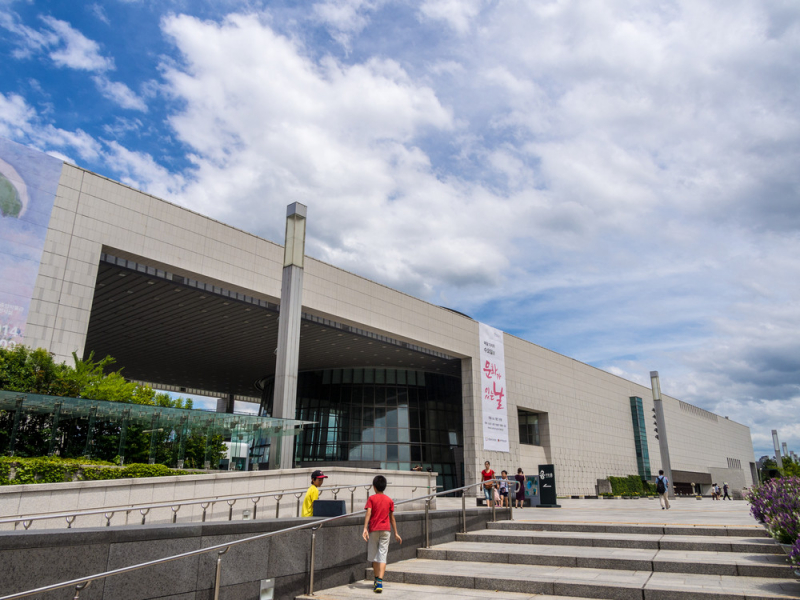
The Jakarta Post -
The Tokyo National Museum, sometimes known as TNM, is an art gallery located in Tokyo, Japan's Tait ward's Ueno Park. The biggest art museum in Japan, one of the largest in the world, and one of the four museums run by the National Institutes for Cultural Heritage, it is said to be the country's first national museum. With a concentration on ancient and medieval Japanese art and Asian art from the Silk Road, the museum gathers, maintains, and exhibits a vast collection of Asian artwork and cultural artifacts. A sizable collection of Greco-Buddhist artwork is also present. The museum is home to almost 110,000 cultural objects, including 319 Horyuji Treasures, 89 National Treasures of Japan, and 644 Important Cultural Objects.
The Tokyo National Museum houses around 10% of the 902 arts and crafts that the Japanese government has recognized as national treasures. As of 2022, there were 902 such items. Additionally, the museum is home to almost 3000 cultural objects donated by people and organizations, including 253 significant cultural objects and 55 national treasures (as of March 2019).
The facilities include the Honkan, which houses the Japanese Gallery, the Heiseikan and Hyokeikan, which host special exhibitions, the Toyokan, which houses the Asian Gallery, the Gallery of Horyuji Treasures, which houses significant artifacts that were once kept in Nara's Horyu Temple, the Kuroda Memorial Hall, which houses a collection of works by Kuroda Seiki, and the Research and Information Center. The museum's grounds include dining establishments and retail establishments in addition to outdoor exhibits (such the Kuromon) and a garden where visitors may take in the changing seasons.
Detailed information:
- Founded: 1872
- Tokyo National Museum Location: Tokyo, Japan
- Tokyo National Museum Annual Visitors: 2.43 million
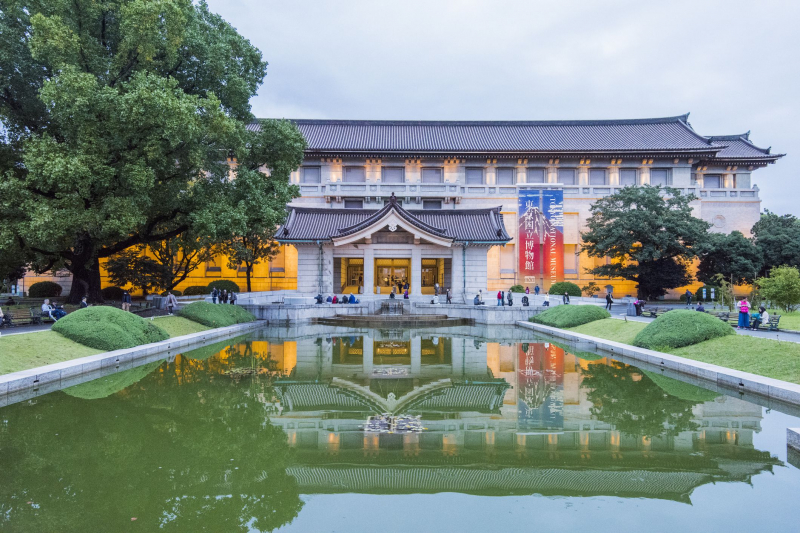
TripSavvy 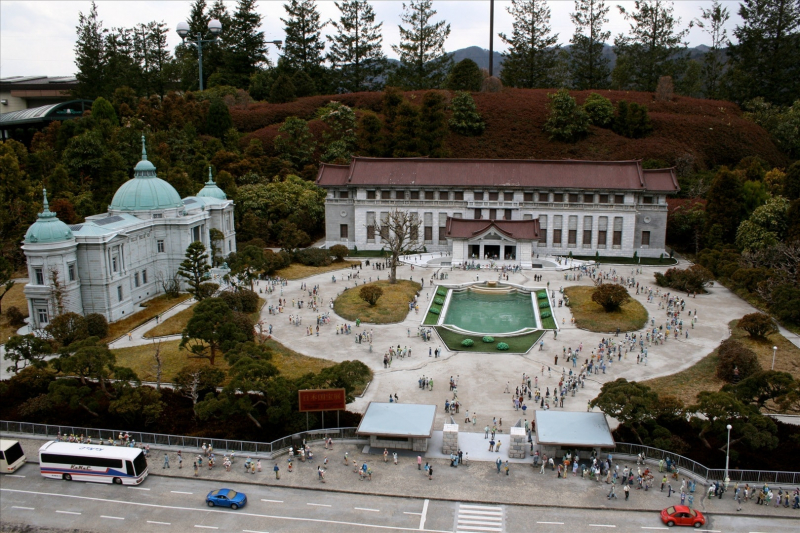
github.io -
The Museum of Modern Art (MoMA) is an art gallery situated on 53rd Street between Fifth and Sixth Avenues in Midtown. It is frequently cited as one of the biggest and most important museums of contemporary art in the world, and it contributes significantly to the creation and collection of modern art. The collection at MoMA provides an overview of modern and contemporary art, encompassing works in architecture and design, illustration and artist's books, painting, sculpture, photography, prints, cinema, and electronic media. The MoMA Library has more than 40,000 files of ephemera regarding specific artists and organizations, together with around 300,000 books and exhibition catalogs, 1,000 periodicals, and more. The archives include original documentation on the development of modern and contemporary art.
A 64% increase from 2020 to 1,160,686 visitors were attracted in 2021. On the list of the world's most popular art museums in 2021, it came in at number fifteen. Architecture and Design, Drawings and Prints, Film, Media and Performance, Painting and Sculpture, and Photography are the six curatorial departments that make up the MoMA. The MoMA's assets, which are widely regarded as having the finest collection of contemporary Western masterpieces in the world, consist of more over 150,000 unique works in addition to some 22,000 films and 4 million film stills. It represents more than 13,000 artists, of whom 80% are men, 20% are women, and 3 are non-binary.
Detailed information:
- Founded: 1929
- Museum of Modern Art Location: NYC, USA
- Museum of Modern Art Annual Visitors: 2.1 million
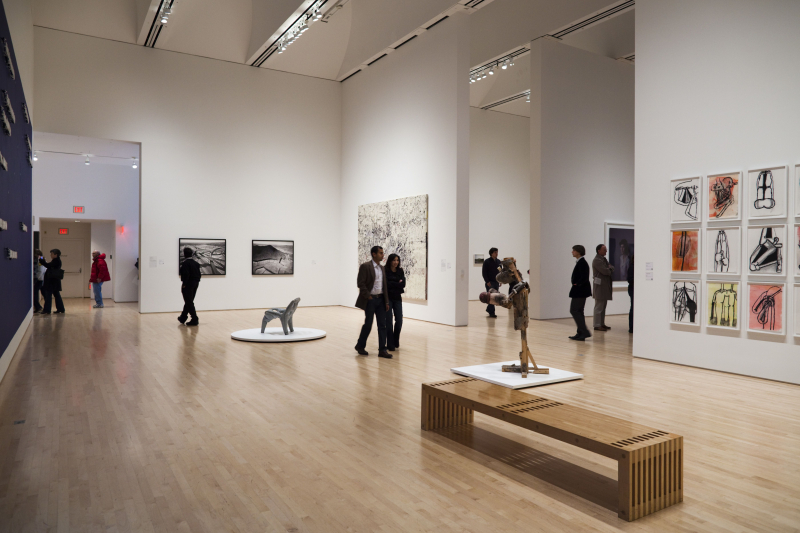
TripSavvy 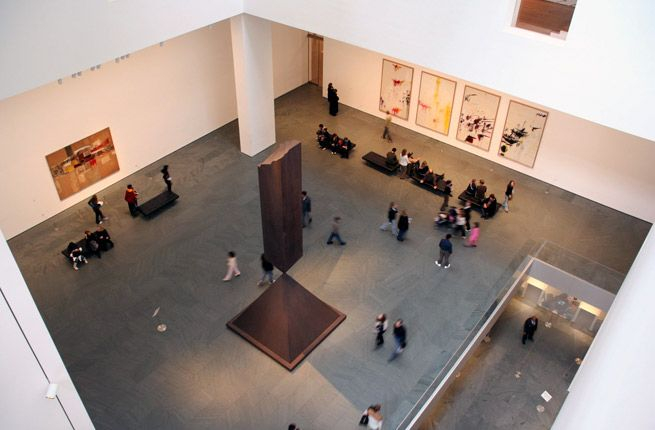
TripSavvy -
The national museum of the Netherlands, the Rijksmuseum, is situated in Amsterdam and is devoted to Dutch art and history. The museum is situated in the Amsterdam South neighborhood's Museum Square, next to the Concertgebouw, Stedelijk Museum Amsterdam, and Van Gogh Museum. The Rijksmuseum was established on November 19, 1798, in The Hague before being relocated to Amsterdam in 1808. There, it originally occupied the Royal Palace before moving to the Trippenhuis. Pierre Cuypers created the current main structure, which debuted in 1885. After a ten-year, € 375 million refurbishment, the main structure was inaugurated by Queen Beatrix on April 13, 2013.
With 2.2 million and 2.47 million visitors, respectively, it was the Netherlands' most popular museum in 2013 and 2014. Additionally, it is the biggest art museum in the nation. A total of 1 million art and historical artefacts from the years 1200-2000 are on exhibit in the museum. Among them are several works by Rembrandt, Frans Hals, and Johannes Vermeer. A minor Asian collection from the museum is also on show in the Asian pavilion. The greatest and largest public art history research library in The Netherlands is the Rijksmuseum Research Library, which is a division of the Rijksmuseum.
Detailed information:
- Founded: 1798
- Rijksmuseum Location: Amsterdam, Netherlands
- Rijksmuseum Annual Visitors: 2 million
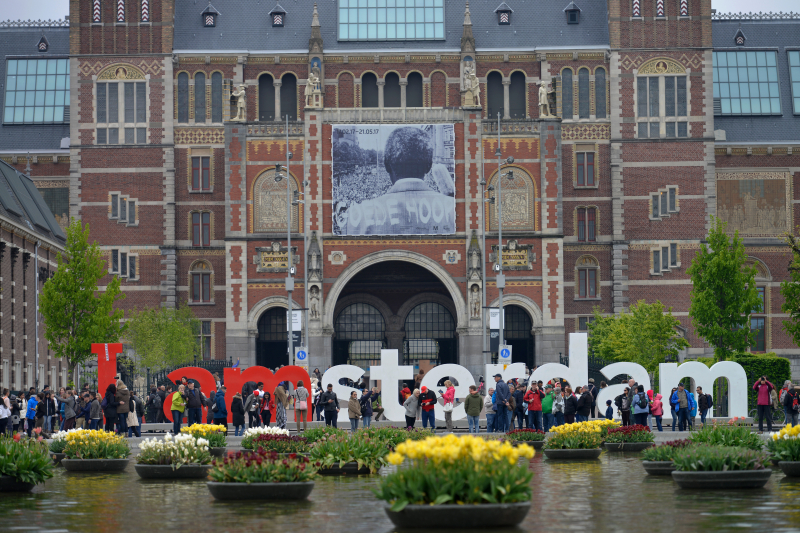
Artnet 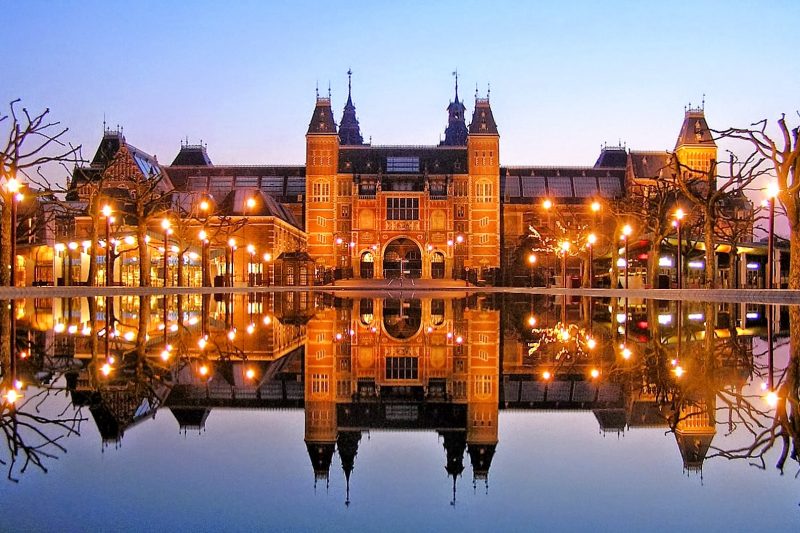
Artnet














